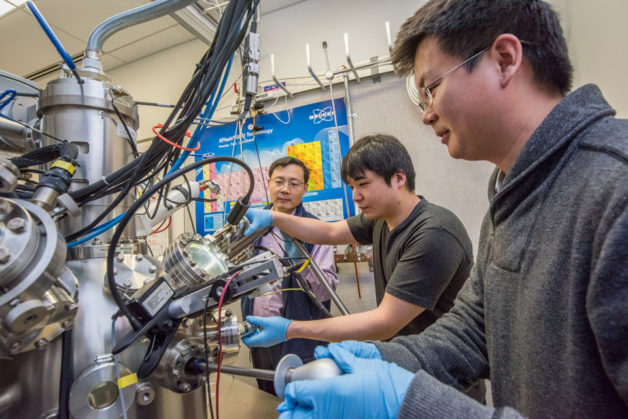Wu group discovered a new mode of electron conduction in solids: decoupled charge and heat transport.


by Daisy Hernandez
January 26, 2017
In metals, electrons carry both charge and heat. As a consequence, electrical conductivity and the electronic contribution to the thermal conductivity are typically proportional to each other. Prof. Junqiao Wu's group and collaborators found a large violation of this so-called Wiedemann-Franz law near the insulator-metal transition in VO2 nanobeams. In the metallic phase, the electronic contribution to thermal conductivity was much smaller than what would be expected from the Wiedemann-Franz law. The results can be explained in terms of independent propagation of charge and heat in a strongly correlated system. The work is published in Science, Vol. 355, Issue 6323, pp. 371-374 (2017). Read more here!
Contact Us
Department offices are located in 210 Hearst Memorial Mining Building, in the Northeast corner of campus.
Address:
| Department of Materials Science and Engineering | |
| 210 Hearst Memorial Mining Building University of California Berkeley, CA 94720-1760 |
Phone: (510) 642-3801 Fax: (510) 643-5792 |
